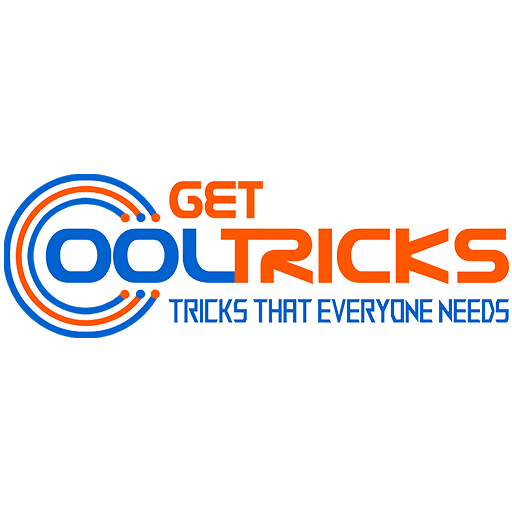Smartwatches and fitness trackers are current bestsellers.
We can subdivide modern wearable devices into the main types as follows:
- Fitness trackers and heart-rate monitors
- Smartwatches
- Headphones
- GPS trackers
- Smart glasses
- Other gadgets using AR/VR.
They all collect and transfer data by using built-in sensors that support Bluetooth, WiFi, and GPS technologies.
1. Gaming
You could see a completely different reality using Virtual Reality while sitting in your own room. You can travel to Middle Earth from Lord of the Rings or maybe visit Narnia or even Westeros from Game of Thrones.
Virtual reality headsets are a type of wearable technology that can change your world. And one of the most popular applications of these Virtual Reality headsets is gaming.
2. Jewelry
Wearable technology, jewellery has many other uses than just looking good. Smart rings can monitor your health and send all the relevant data to your smartphone.
One example of this is the Oura Ring which is a smart ring that can track your physical health and monitor your vitals while you sleep. And what if you don’t like rings? Never fear! Joule is a company that creates earring backings that you can pair with any of your earrings. These track your heart rate, physical activity levels, and calories burned. And you don’t need to worry about your smart jewelry being stolen because it comes equipped with GPS. Now you can stay healthy while looking fashionable as well!
3. Health
There is not really anything you can do without good health and so it is imperative to take care of yourself. However, this is easy to forget in the hustle-bustle of life. Fortunately, there are different types of health wearable tech that can help you remember that!
For example, there are posture aids that can help you maintain the correct posture to prevent back pain. An example of this is the Upright Go posture trainer that is the size of a matchbox. You can attach it to your upper back and it will give gentle vibrations when you slouch your posture. Hopefully, that can cure us of the humpback posture by sitting in front of the laptop or staring at the phone hours at a time!
4. Security
Have you seen those spy movies where the hero has glasses that are actually mini-computers and can scan the villain to provide all the information? Yes, those glasses may actually become reality because of a combination of facial recognition, computer vision, and wearable technology.
Imagine that police officers could be wearing what looks like normal glasses but that can identify the culprits of a crime by matching their image with an entry in the police database using facial recognition. It is even cooler if security cameras are integrated with these smart glasses using IoT so police officers can immediately know if there are any suspects around them. And if you think these sound like science fiction than reality, then you should know that Vuzix Blade Smart Glasses are already used by the Netherlands national police with great success!
5. Fitness
The most popular application of Wearable Technology has been in the field of Fitness from the beginning. That’s right, I am talking about the Fitbit which is so popular it’s less a fitness monitor and more a fashion device these days. For the uninitiated, Fitbit is a fitness company that creates smartwatches and activity-tracking bands that monitor various aspects of your fitness including heart rate, sleep quality, number of steps walked, number of steps climbed or run, number of kilometer running each day, etc. Whatever, Fitbit product you buy, it is connected to a fitness app that shows your daily activity, sleep goals, etc. You can also connect multiple Fitbit devices to your app and it will automatically sync with whatever you are wearing. The best example of the Internet of Things!
6. Clothing
The importance of clothing cannot be understated! Fashion plays an important role in looking good as well as dressing for the occasion. And if the technology is integrating into all possible sectors, then why not fashion as well! There are various applications of wearable technology in clothes.
These yoga pants can be synced with Bluetooth and they provide light electric pulses in the hips, knees, and ankles until you move to the correct yoga positions. You can also see more feedback about your yoga poses on your phone. That’s one way to do yoga without an instructor! Another example of smart clothing is the Google commuter jacket built conjugated with Levi’s. It’s a great biking jacket that allows you to control music and maps with just hand gestures without touching your phone. This jacket is smart in more ways than one!
7. Tattoos
Most of you might have thought of getting tattoos someday, but what if you could get smart tattoos now?!! Most of the wearable technology discussed till now has been some device that you need to wear and which has battery life. There are many disadvantages to this as you cannot continue wearing these devices all the time. But there are no such problems with a tattoo. Researchers at MIT and Harvard have created tattoo ink for smart tattoos that can detect health problems. These tattoos will change color if you are getting dehydrated or if your blood sugar rises if you are a diabetes patient. These tattoos have a broad set of applications in that they can be externally used to gauge the state of the body without any invasive procedures required.
Wearable Technologies in Logistics and Transportation
Companies working in these areas face many challenges and have to constantly solve problems related to goods transportation and accounting, information updates, the necessity to optimize routes, etc. The wearables utilized in this area allow:
- tracking vehicles or goods location;
- controlling personnel’s work and movements;
- choosing the best route;
- optimizing goods segregation at warehouses;
- receiving information on the cargo using AR, etc.
Wearable Technology in Sport and Fitness
In the broad consumer segment, wearable devices have gained the greatest popularity in the area of sports, fitness, and a healthy lifestyle. Moreover, the coronavirus pandemic additionally boosted this segment’s development.
In this regard, people use them to track bodily indicators (heart rate, calories burned) and control training regimens (GPS tracking, user activity). At the same time, one might say that manufacturers have successfully resolved the most pressing issue for such gadgets, namely accuracy.
Wearable Technologies in Healthcare
Medical wearable electronic gadgets use sensors to monitor, analyze, store and transfer data. For instance, such devices allow monitoring blood sugar levels, oxygen saturation, heart rate, blood pressure, body temperature, sleep quality, and many other vitals.
Healthcare professionals are actively using technological advances to protect people better and prevent possible health problems. The healthcare industry utilizes not just smartwatches and bracelets but also sensors embedded in rings, smart patches, and even clothes.
Wearable Technologies in Entertainment
The gaming and entertainment industry is always the first to adopt advanced technological developments, and most often, they can fully fulfill their potential in this niche. VR headsets, glasses, and controllers were the first type of wearable device used in games. They are in demand for all kinds of entertainment, such as virtual travel or watching movies.
AR glasses are not yet quite affordable, but this direction is being actively developed, and obviously, successful products will be in demand.
Wearable Technologies in Travel
Smartwatches and AR glasses can be used to navigate in cities and explore local landmarks.
We can mention Google Pixel Buds 2 headphones as an example of an interesting and non-standard approach to the use of wearables, as they allow translating speech in a real-time environment. This technology is not perfect enough so far. However, it provides tremendous opportunities for travelers.
Wearable Technologies in Education
Wearable devices can help teachers and students learn, exchange knowledge, and solve everyday problems. In this regard, VR/AR glasses pose a specific interest, as they allow for increasing student involvement, improve learning content perception, and accelerate new knowledge and skills acquisition.
We can exemplify the use of the technology by virtual excursions, language studies, and assistance to medical students by using the capabilities of augmented reality.
Wearable Technologies in Retail
The NFC technology used for making contactless payments has become a practical amenity most often used by people who own smartwatches and fitness bracelets. According to surveys, 34% of wearable device owners use them to pay for their purchases.
Wearable Technologies in Construction
The advantages of wearable technologies can also be experienced in such a relatively conservative industry as construction. Wearables allow tracking data on workers’ health statuses and locations, as well as identifying potentially hazardous zones (for instance, gas emissions) and controlling access to restricted areas.
We can expand this list almost indefinitely, as sensors and wearables can find their application for a wide variety of purposes.




